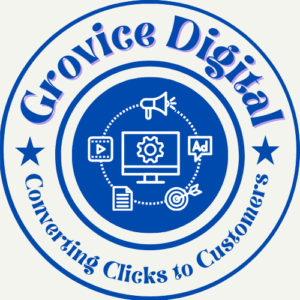[ad_1]
In the not-so-distant future, the world of business is set to experience a seismic shift that will redefine competition, customer engagement and, ultimately, corporate survival.
At the heart of this transformation is agentic AI — a breed of artificial intelligence that promises to revolutionize everyday life by acting as our personal digital assistants, our “gofers” in the truest sense. This is not the stuff of science fiction; it is an emerging reality that is already making headlines and promising to simplify life in ways that were once the realm of our wildest dreams.
Marketing to Algorithms, Not Humans
Picture the scenario: You are preparing for an important business trip overseas. Your agentic AI, which has been learning your preferences for years, springs into action. It begins by analyzing your calendar, identifying potential gaps and cross-referencing your frequent flyer mileage, dietary restrictions and hotel preferences.
Within minutes, the AI has not only booked a direct flight to Paris but has also secured a suite in a boutique hotel renowned for its impeccable service. The system then coordinates with local partners to arrange dinner reservations at a hidden gem of a restaurant serving authentic French cuisine, and it even schedules a taxi to pick you up the moment your flight touches down.
This picture of a near-future reality underscores the transformative power of agentic AI, one that goes far beyond digital assistants proffering advice. It becomes an integral extension of the self — managing mundane tasks while curating personalized experiences.
Yet, as agentic AI integrates more deeply into our daily lives, it forces a dramatic rethinking of business strategy. Traditional models of competition, built around reaching individual consumers through targeted marketing and emotional branding, are about to be disrupted. In a world where consumer decisions are mediated not by human whims but by sophisticated algorithms, companies will increasingly be interacting not with the consumers themselves, but with the consumers’ AI.
This shift calls for a re-evaluation of corporate strategies in the wake of a new form of market negotiation — one that occurs between intelligent digital entities.
Related Article: Is Your Data Good Enough to Power AI Agents?
3 Strategies for Mastering AI-Mediated Commerce
Businesses have three potential strategies to adapt to this brave new world of AI-mediated commerce.
Strategy #1
The first strategy banks on the belief that the end-user will continue to make the final purchasing decision. In this approach, companies maintain their current product presentations and marketing messages, assuming the consumer will see the emotional appeal of their offerings. However, as the role of agentic AI expands, this assumption becomes increasingly precarious. There is a growing risk that an individual’s AI might filter out a corporate offer entirely before it even reaches the consumer.
Strategy #2
The second strategy posits that the consumer’s AI will be armed with a detailed profile of the user’s preferences and requirements. With this in mind, companies might choose to tailor their messaging to make it easy to map their claims to the customer’s predefined preferences. In essence, they would be offering a clear signal to the customer’s AI about what type of use cases their products and services are designed for.
For example, a car manufacturer could prominently display the car’s performance, financial and environmental characteristics in a standardized way, and demonstrate that independent auditors verify the claims are true. While this approach makes it easier for the AI to categorize and match products with consumer desires, it ultimately leaves the heavy lifting of matching these preferences entirely in the hands of the consumer’s AI. The corporate message, though clear, remains passive — a static piece of information waiting to be picked up by an algorithm rather than actively engaging in a dialogue that could lead to a sale.
Strategy #3
The third strategy, which may hold the greatest promise, involves a dynamic negotiation between the corporation’s AI and the consumer’s AI. Here, companies would deploy their own AI systems to engage directly with the consumer’s digital agent, initiating an interactive process of discovery and negotiation. Instead of simply broadcasting a one-way message, the corporate AI would probe the consumer’s AI for more granular details about the customer’s needs, priorities and even latent desires.
Imagine you owned a high-end jewelry store and were engaged by a customer’s agentic AI, which signaled an interest in purchasing a diamond ring. Instead of simply displaying the product and hoping for the best, your store’s AI could initiate a conversation, inquiring about the context behind the search. Through this digital discussion, your AI might discover the ring in question is not just a piece of jewelry but is intended to be a wedding ring. With this additional insight, the jewelry store’s AI is now positioned not merely to sell a ring but to offer additional products and services through partnerships with other providers, such as wedding planning, venue suggestions, catering and bespoke honeymoon packages.
By engaging directly with the consumer’s AI, the corporate AI transforms a simple product inquiry into an opportunity to build a broader ecosystem of services — a move that opens new cross-selling opportunities and the potential to grow the jewelry store’s profit.
Pros and Cons of Each Strategy
Each of these strategies presents its own strengths and vulnerabilities. The first strategy is grounded in traditional marketing wisdom but risks obsolescence if the consumer’s AI begins to act as a gatekeeper, filtering out offers before the human consumer even has a chance to weigh in.
The second strategy is a step forward — it ensures a company’s offerings are clearly defined in a language the consumer’s AI can understand and trust. Yet, it is passive and relinquishes a certain degree of corporate agency by allowing the consumer’s AI to be the primary driver in matching preferences.
In contrast, the third strategy actively engages in a negotiation process, enabling the corporate AI access to valuable insights about customer needs and priorities. This proactive approach offers companies a greater opportunity to shape outcomes rather than passively responding to inquiries. In the cutthroat era of agentic AI, it is not enough to simply be seen by the customer’s AI; one must actively win its trust and secure its confidence.
Trust Is More Important Than Ever
Trust becomes the linchpin in this new ecosystem. For a corporate AI to successfully engage in negotiations and obtain meaningful information from a consumer’s AI, it must first earn the consumer’s trust. In practical terms, this means the consumer’s AI must be confident any shared data will be handled responsibly and ethically.
The sharing of personal data raises consumer concerns over privacy and security and in many jurisdictions will require specific and informed consent. To navigate these waters, a growing array of “consent engines” will likely emerge. These technological tools may evolve from today’s simple consent dashboards into rule-based systems and then to more sophisticated risk-based “consent engines,” which take into account a corporation’s reputation, data breach history and rigor of the regulatory regime where the company is located.
The outcome of such an assessment would directly influence how much and what type of data the consumer’s AI is prepared to share. In this emerging environment, trust will no longer solely be the concern of compliance departments and corporate tree huggers; it will also be critical to the sales and marketing departments.
Related Article: 5 AI Case Studies in Marketing
A Radical Restructuring of Consumer Markets
This dynamic sets the stage for a profound bifurcation in the corporate world. Companies that manage to earn and maintain the trust of consumers — and by extension, the consumer’s AI — will gain a competitive advantage. These trusted brands will be able to access richer customer data, providing them with a deeper understanding of the customer’s needs and preferences.
The data exchange during an AI-to-AI negotiation could reveal latent needs that open up entirely new revenue streams. Conversely, companies that fail to build the requisite trust will find themselves relegated to the market’s periphery. These distrusted brands will see an ever-higher percentage of their sales being made via more trusted brands, ultimately diminishing their customer relationships and ruthlessly driving their commoditization.
Over time, the market will likely witness a clear bifurcation: on one side, there will be a cadre of trusted organizations that benefit from rich data flows and can actively negotiate and shape customer outcomes; on the other side, there will be a host of distrusted brands who are relegated to a supplier role shorn of their customer insight and relationships.
This bifurcation will inevitably lead to a radical restructuring of consumer markets. Over the coming decade, we can expect to see entirely new winners and losers emerge. The victors will be those companies that successfully build trust with consumers, effectively harnessing the data shared by agentic AI to create ever-expanding ecosystems of products and services.
In many ways, this scenario is reminiscent of the early days of the internet. Back then, the rise of big-tech companies was fueled by their ability to leverage new data flows and expand their business models beyond their original core services. These companies moved from being simple providers of information to becoming integral parts of multiple interconnected verticals — from advertising to ecommerce to cloud computing to entertainment.
Is AI the Next Extinction Event?
Agentic AI is poised to trigger a similar wave of transformation across all consumer sectors, from retail and hospitality to healthcare and finance. The companies that manage to use the new data flows to weave intricate networks of services will be the ones that thrive in the new AI-driven landscape, much like the tech giants that rose to prominence by capitalizing on the data revolution in the early 21st century.
For CEOs and corporate strategy departments, the advent of agentic AI represents both an unprecedented opportunity and a formidable challenge. The traditional levers of competition — brand, quality and customer service — will need to be augmented by a new focus on data trustworthiness and AI negotiation capabilities. Corporate leaders must now reconsider investments in their traditional martech stacks and focus on new advanced AI systems that can interact seamlessly with consumer agents and robust data governance frameworks that reassure customers about the company’s ethics and responsible data handling capabilities. Trust will not be merely a compliance checkbox; it will be the strategic asset which determines the future winners and losers in virtually every consumer market.
The rise of agentic AI heralds what may well be an extinction event for corporations that fail to adapt to this new paradigm. The companies that continue to rely on outdated models of direct human engagement risk being left behind as consumer decisions become increasingly the purview of intelligent digital agents.
By proactively embracing strategies that involve dynamic AI-to-AI negotiations, building robust frameworks for data trust and seizing opportunities to expand into new service ecosystems, forward-thinking companies can not only survive but thrive. The corporate extinction event is not a distant threat — it is a clarion call to innovate, adapt and embrace the future of business in an era defined by the rise of agentic AI.
Learn how you can join our contributor community.
[ad_2]
Source link


